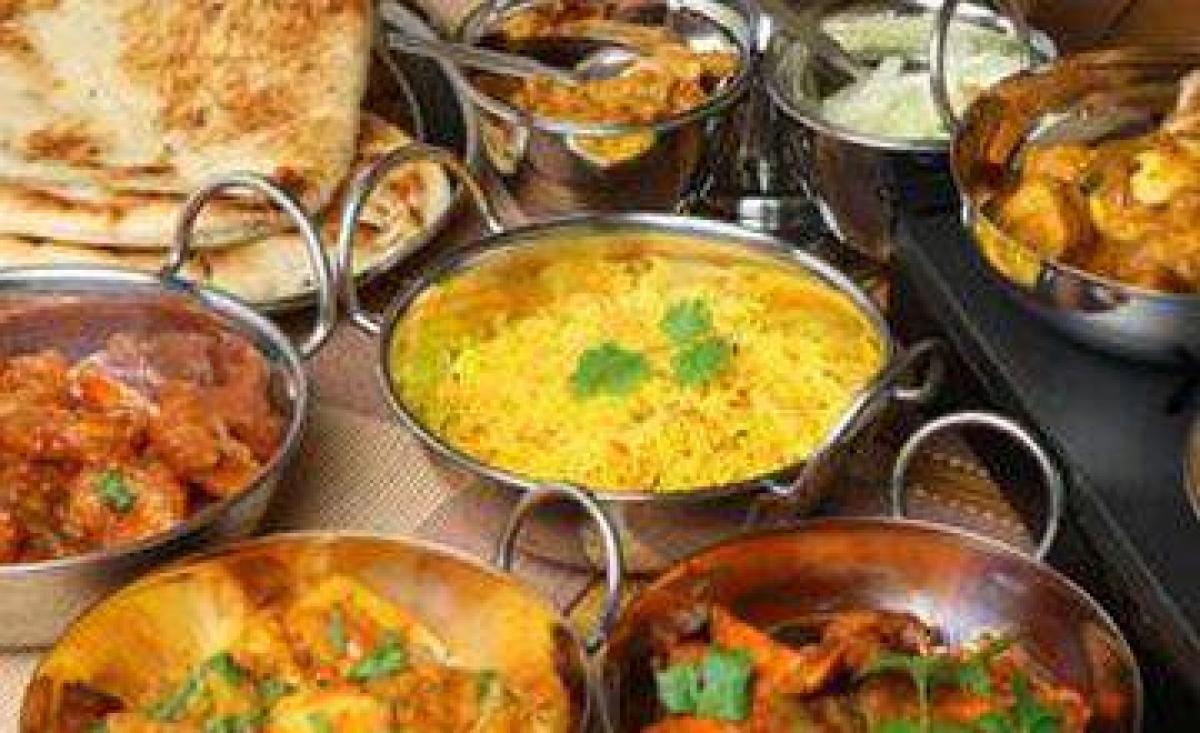Live
- Oppn misleading people, says PM
- Telangana CM Revanth Reddy Suggests Prioritizing the Most Needy for Indiramma Housing Scheme
- Telangana School Holiday: SFI Announces Bandh on November 30 Over Food Poisoning Cases
- NIT Warangal Library Trainee Recruitment: Last Date for Applications Tomorrow
- Singareni Recruitment 2024: Notification for 64 Internal Job Vacancies Application Deadline Announced
- A Teenager's Fight for Justice: Hyderabad Court Sentences Father to Life for Heinous Crime
- The Role of AI in Diagnostics, Treatment, and Patient Care
- Freshers’ Day Celebrations at Palem Agricultural Polytechnic College.
- Pearl Academy and Tech Mahindra Collaborate to Establish Makers Lab in Bengaluru
- “The Best Time to Start Retirement Planning is Now”, Says HDFC Life’s Latest Campaign
Just In

A food festival in the city of the Taj will see the chefs spread out the 350 year old cuisines from Delhi, bearing the stamp of Jahan Ara, daughter of Emperor Shah Jahan.
A food festival in the city of the Taj will see the chefs spread out the 350 year old cuisines from Delhi, bearing the stamp of Jahan Ara, daughter of Emperor Shah Jahan.
Introducing the much researched cuisines of Shahjahanbad, an official of the Hotel ITC Mughal said, "We bring to the people of Agra, the Shahi Dastarkhwan of which many of the dishes are forgotten but the memories linger on of the signature recipes."
The culinary historian Salma Hussain, along with Chef Amrth Chakaborthy of the hotel, will present Khwan-E-Mazi, the tradition of the food of the bygone era under the banner of "Forgotten Treasures in the Kitchen of India."
The heart of Delhi can be found in old Delhi, 350 years old, yet strong and beating. The city originated when the fort at Agra faced agonising heat and insufficient accommodation for Shah Jahan's lavish lifestyle and his grand banquets. The Emperor chose a site south of Salimgarh after consulting astrologers and hakims, to build a new city called Shahjahanabad.
The city of Shahjahanbad interestingly bears a woman's stamp. It was Jahan Ara, the favorite daughter of Shah Jahan, who laid the foundation of the city around 1639. Within nine years, the famous Red Fort sprang into existence in all its glory and grandeur.
Shah Jahan entered the new capital on April 18, 1648, to mount the Jeweled throne, Takht-e-Taus, and held a ten day-long celebration to inaugurate Shahjahanbad.
"If the stone-walls of old city had ears, they would be undisputed custodians of some of the best recipes in the country; such was the status of the royal kitchen where talent and ingenuity among chefs were nurtured and creativity was amply rewarded," said Jyoti Chitkara of the hotel.
Then, the arrival of every dish was a ceremony and history will never be able to forget the pomp and show of Shahjahanabad along with the flavours which remain only in the pages of hand-written manuscripts of those days, she added.
The bazars of the city were charged with the smoke of different kababs and the environment was filled with the fragrance of Nahari, haleem, quormas and qaliyas. The array of breads was dazzling. Festive occasions were never complete without Baqarkhani, kulchas and sheermals. Sharbat ke katore, daulat ki chat and kulfi ke matke added colour to the scenario.
Much of that would be on offer during the festival for the connoisseurs from March 26 at the Taj Bano restaurant.
The glory of Shahjahanbad continued even during the reign of Bahadur Shah Zafar. The city did not lose its grandeur and lavish banquets continued to entertain nobles and wazirs until the first war of independence in 1857. The era was also known for its varied flavours which were part of Shahi Dastarkhwan.
Some of the signature dishes of the festival are Gulab Tulsi ke Kebab, Mughlai Tikka, Dal Turkmani, Qavas-wa-Qazah, Bhara Kaddu, Zeer Biryan Paneer, Mussalam Murg, and Gehun ki Biryani. The festival will offer merged cuisines of Mughals and later eras or places in India.
Mughals were creative and used all natural colours and as they were warriors, the chefs kept in mind recipes which had ingredients like nuts , almonds, veggies and herbs full of energy. Mughal food was non-spicy but later red chilly was introduced.
The recipe offered by Salma and the chefs come from some original research by the hotel from Shah Jahan's time. Thus you have Gehun ki Biryani of broken wheat, Qavas-qa-qazah is a rainbow coloured kofta made of natural colours of beetroot, spinach, saffron. Mussalam Murg is chicken stuffed with pistachios cooked on cinnamon sticks for flavour and tulsi gulab paneer is paneer tikka with fresh tulsi leaves and rose petals.
Salma is a culinary historian and Persian scholar. She said that her interest in researching food arose with the belief that the great Mughals would surely have left traces of food, besides forts and Mughal architecture.
She said food is like a canvas wherein chefs fill their colours of creative recipes. So it will be for the duration of the festival when the Mughal kitchens will entice the visitors to food fit for kings.

© 2024 Hyderabad Media House Limited/The Hans India. All rights reserved. Powered by hocalwire.com







